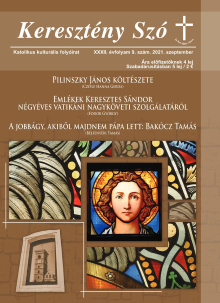
We kindly inform you that, as long as the subject affiliation of our 300.000+ articles is in progress, you might get unsufficient or no results on your third level or second level search. In this case, please broaden your search criteria.

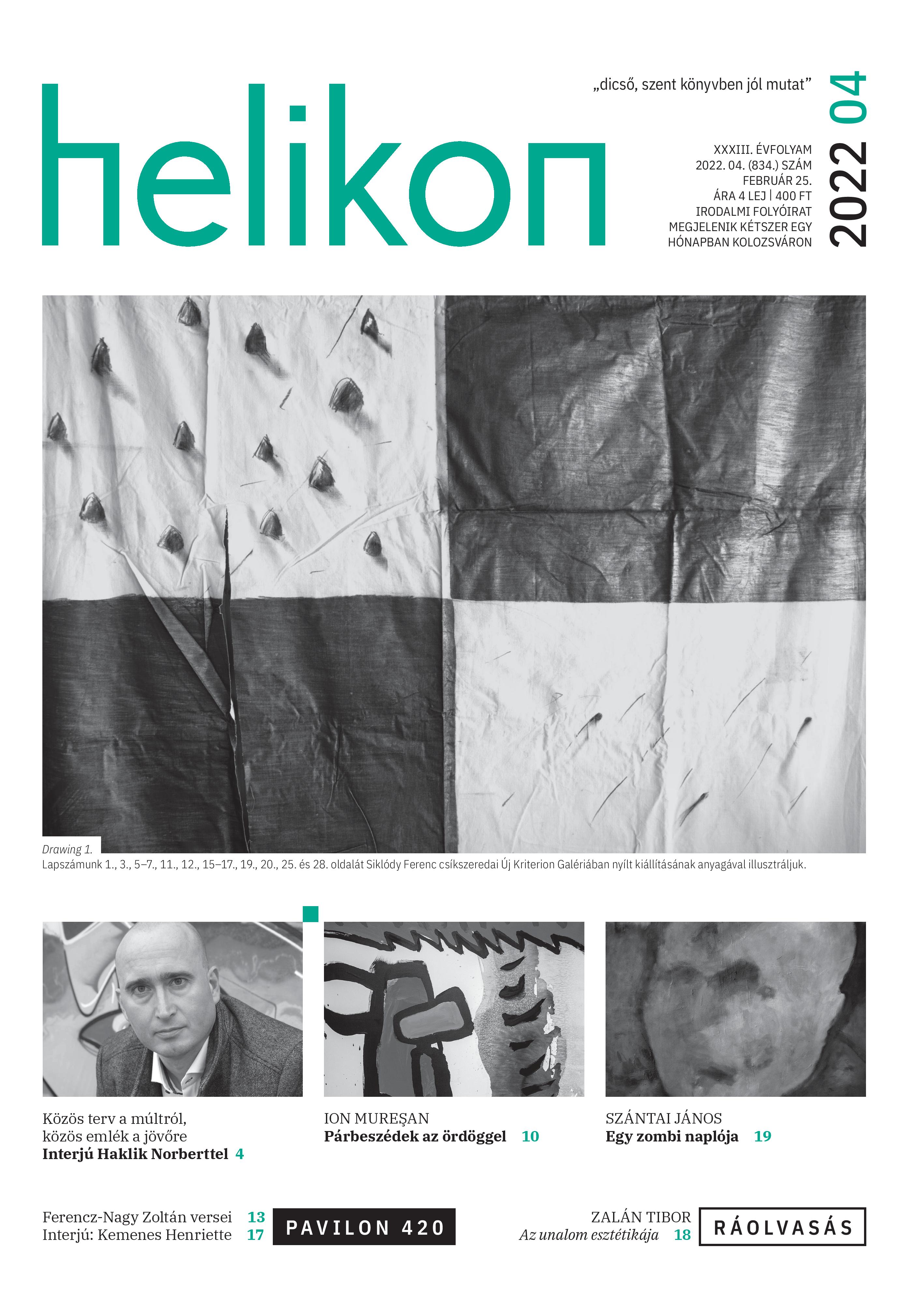

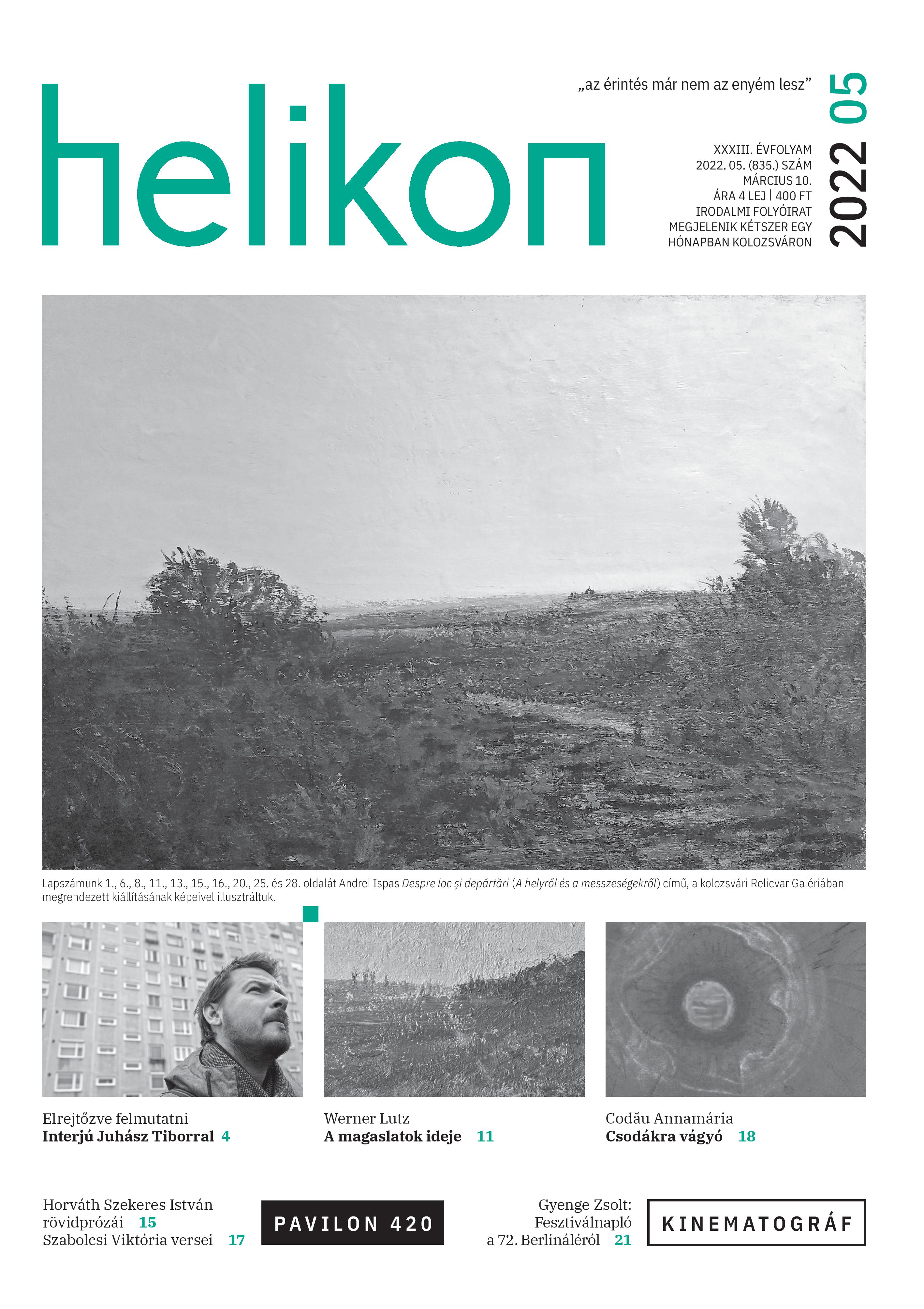


Review: Amire Telik by Tibor Juhász, Scolar Publishing House, 2021.
More...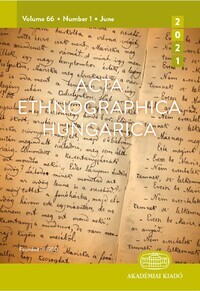
In the first half of the present article, I review collections of folk literature which include 19th-century folktales, placing a special emphasis on trying to establish the extent to which these texts and the associated collectors have been studied, explored, and published.1 Next, I demonstrate which of the texts in question may be considered as part of the canon2 of folk literature that emerged in the latter third of the 19th century, which works and authors defined the approaches that were considered relevant, and what the selection criteria for canonisation were. Alongside the interpretative canon, I shall also attempt to record the textual canon and its changes – to capture the act by which certain texts were clearly excluded from the canon while others were included by the individuals who wished to create or modify the canon. I would also like to show how the image of 19th-century collectors and collections created in the second half of the century became gradually transformed during the 20th century, and how these changes affected the place the collections in question occupy in folkloristics in general.
More...
Our study undertakes to interpret one of the most resonant works of contemporary Hungarian literature, Anita Moskát´s Irha és bőr (Hide and Skin) novel, from the perspective of character building. The novel allows for a multi-pronged approach to living complexity through a provocative and fruitful shift. An intelligent life form appears in the story: some animals have become subjects that show hitherto unknown anatomical-conscious features. The species are, therefore, unique chimaeras, representing a new class. In principle, global transformation can lead to infinite variance, increasing the bio-figurative diversity associated with the post-Tolkien vision. The anthropological issues of the novel, the dynamization of the relationship between human and animal characters, and the opening of human biological, legal, and cultural identities are analyzed in the context of science, weird fiction, and posthumanism.
More...
Balázs Imre József: To equalize, to differ. Illustrated by Éva Márton. Gutenberg Publishing House, Miercurea Ciuc, 2022.
More...
Transylvania was during the long 18th century a grand principality belonging to the Habsburg Empire. In its rich culture, it is necessary to investigate the role played by rural noble residences and small town palaces, with educated ladies as hosts, in preserving and renewing cultural traditions. The paper focuses on the contexts of these cultural practices like history of women's education, highlighting that the history of women can be better understood by examining society as a whole. The sources for the investigation consist of the correspondence and memoirs of foreign visitors and educators, travelers and poets, enthusiasts of music and literature.
More...
Attila Sántha was born in 1968 in Kézdivásárhely. He completed his secondary education in his hometown (1986), graduated as a teacher of Hungarian-English at the Babeș-Bolyai University (1995), and then obtained his doctorate in Szeged (1999). From 1992 he was the editor of the Hungarian pages of Echinox, and in December 1994 he was one of the founders of the Forward Locality magazine, of which he later became a book series. His first volume of poems was published in 1995, entitled The Wonderful Poems of Baron Münchhausen. Former Secretary of State, Head of the Sapientia Eötvös Loránd University, Founder of Zelegor Publishing House in Târgu-Mureş, Director of the Transylvanian Hungarian Writers' League (E-MIL) from 2002 to 2004, President from 2004 to 2005. In 2019, he was awarded the József Attila Prize. He currently lives in Kézdiszászfalu. His most recent volume: From Branch to Branch (Forward Locality Writing Academy, 2021).
More...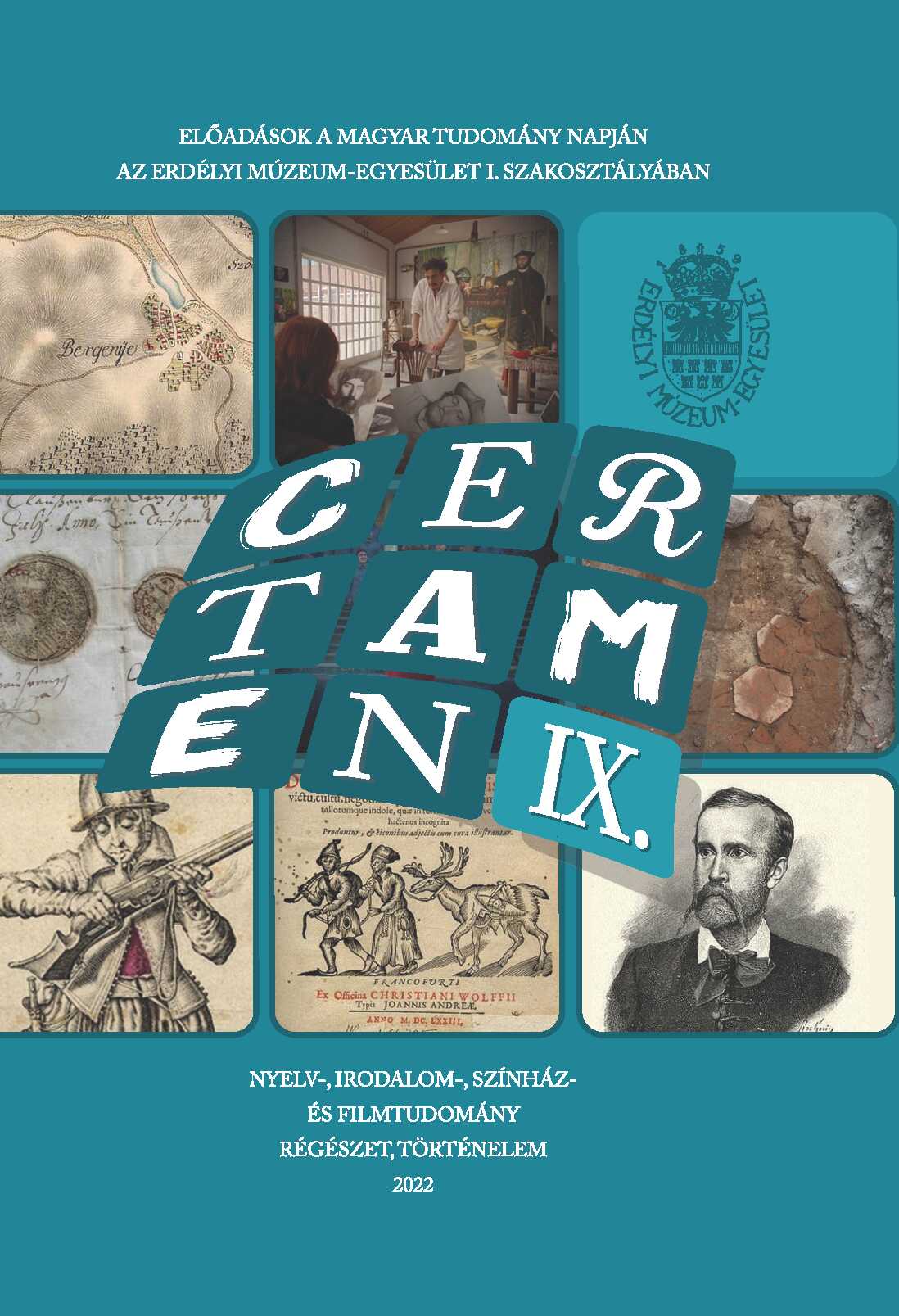
Lajos Dóczi (1845–1919) was a writer, poet and translator, journalist and a bilingual diplomat of Jewish origin. The Hungarian poetic drama, The Tragedy of Man, became known in German culture thanks to his translation. His German translation of the Hungarian drama was published several times and it was used for staging the drama in Hamburg, Wien, Berlin and Zürich. The similarities between the two works (Faust by Goethe and The Tragedy of Man by Imre Madách) make possible the continuous comparing of the two works in the German reception of the Hungarian drama. The influence of Faust was the theme of debate about the originality of Hungarian drama as well as the role of translation in creating similarities.
More...
Echinox, the students’ journal written in three languages (Romanian, Hungarian and German) in Cluj has been published for 53 years. This study aims to find possible answers to the title question from all the three viewpoints by examining the jubilee edition of 1978. The main focus of the research falls on the writings remembering the starting days of the journal included in this merged issue. Besides these writings I make use of an interview with Franz Hodjak to study the German pages, and the reflective writings of the contemporary newspapers to examine the Hungarian pages. We can conclude that some people consider Echinox a story of success, while others think about it as a failure or a series of failures.
More...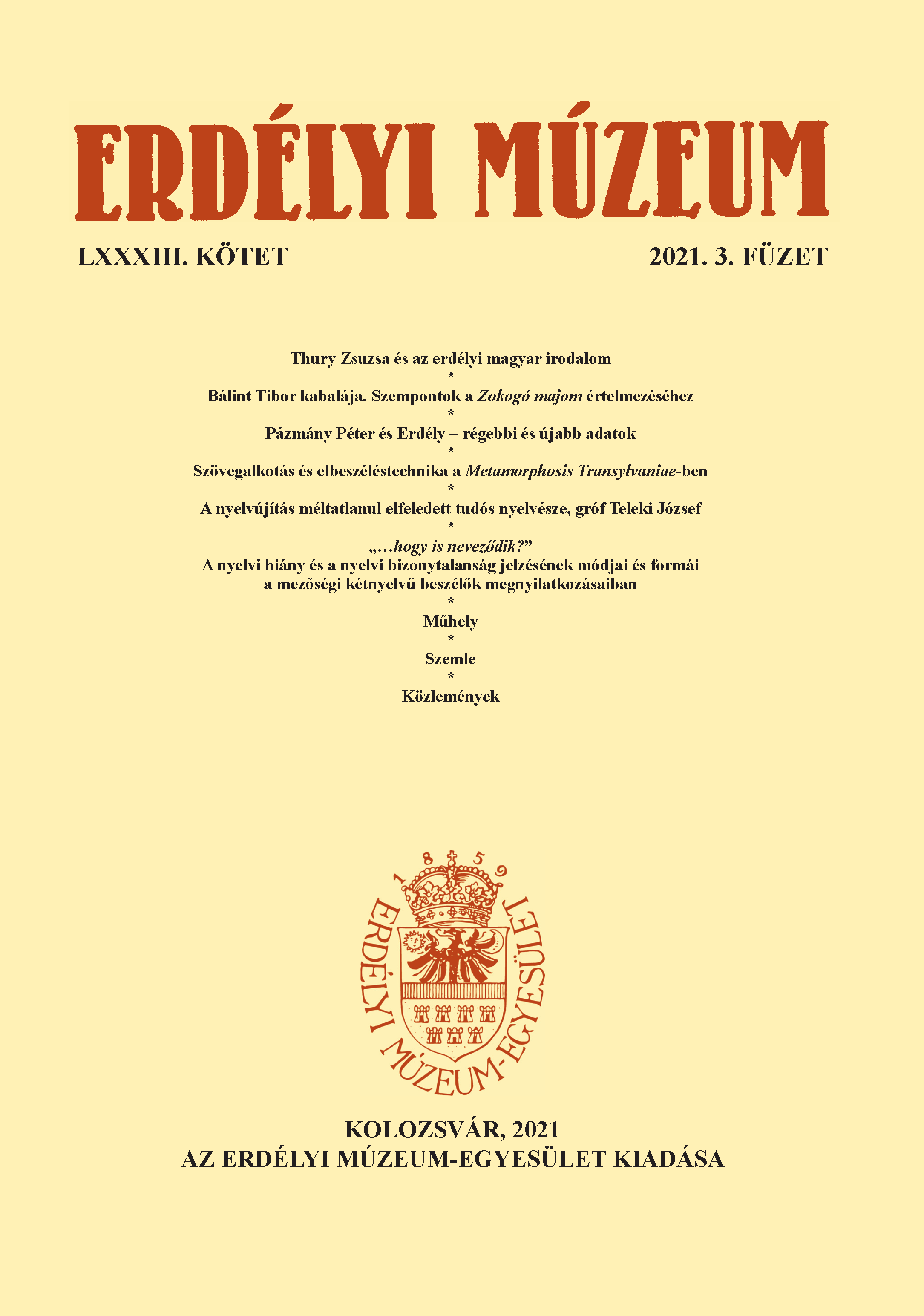
1969 is known to be the year when Hungarian literature in Romania finally comes of age, and the highly anticipated novel is born. We may come to this conclusion based on the reviews and debates centered around three essential novels (widely acclaimed by readers and critics alike): “The Wailing Monkey” (“Zokogó majom”) by Tibor Bálint, “Anvil, Drums, Bell” (“Üllő, dobszó, harang”) by István Szilágyi and “My Mother Promises Sweet Dreams” (“Anyám könnyű álmot ígér”) by András Sütő. Nonetheless, the release of “The Wailing Monkey” was not without precedent. To see that, it is enough to look up issues of two literary journals, “Utunk” and “Igaz Szó”, starting from Bálint’s debut in 1955. Sketches, interviews, glosses, portraits, confessions, essays protrude behind the years of preparation for writing “The Wailing Monkey”. Through their examination, we may determine not only certain tropes of the novel mentioned above, but important trademarks regarding Tibor Bálint’s prose.
More...
An Interview With László Noémi.
More...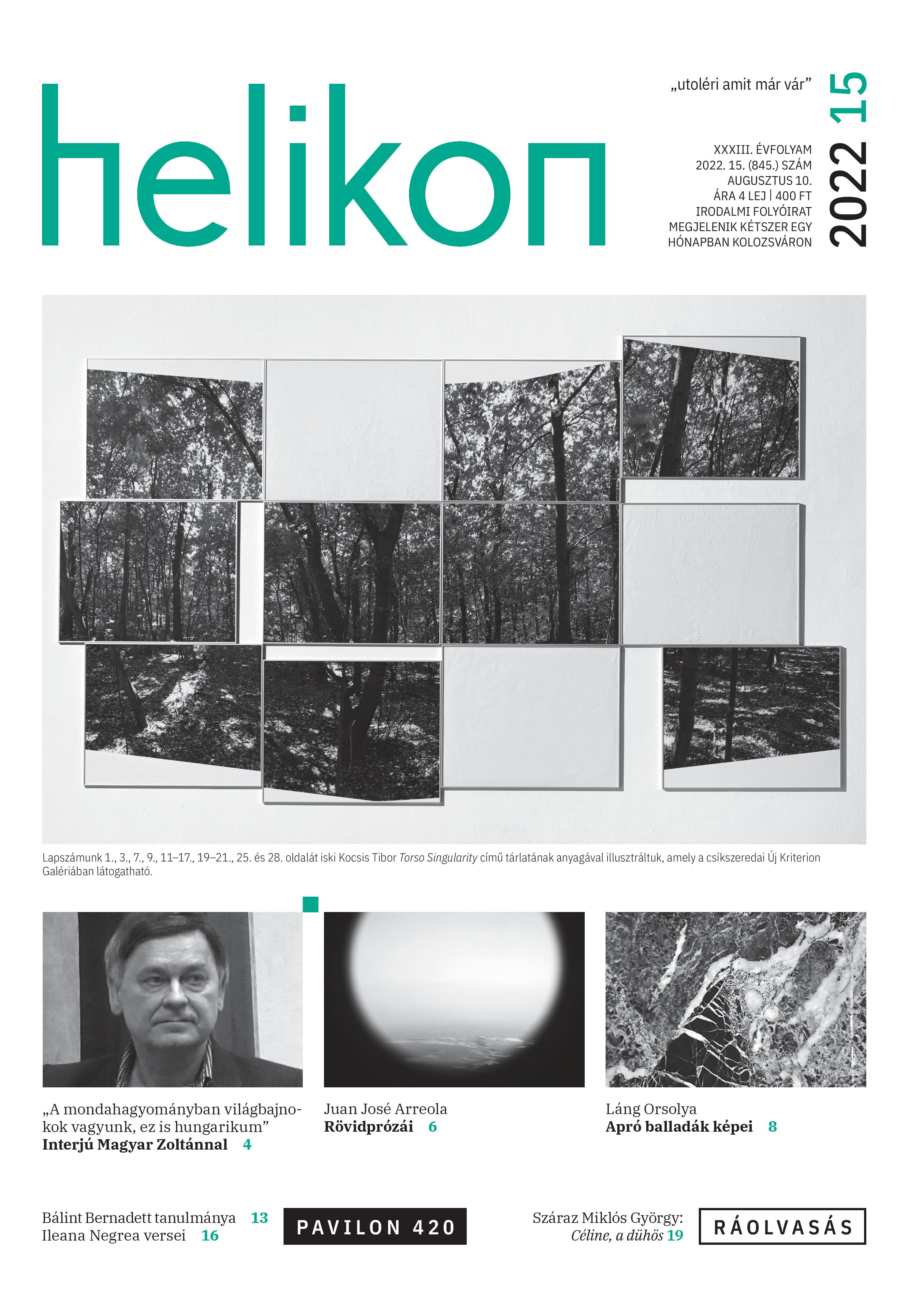
Metamodernism is associated with the names of two Dutch cultural researchers, Timotheus Vermeulen and Robin van den Akker, who published their essay Notes on Metamodernism1 in 2010, which is considered the opening text of the metamodern worldview. When defining metamodernism, it is difficult to be consistent in whether it is called a worldview, a cultural trend, a political or economic system, a literary style, or a structure of feeling. It is also because, similar to the previous ones (modernity, post-modernity, enlightenment), metamodernity embraces the phenomena of the world like an umbrella.
More...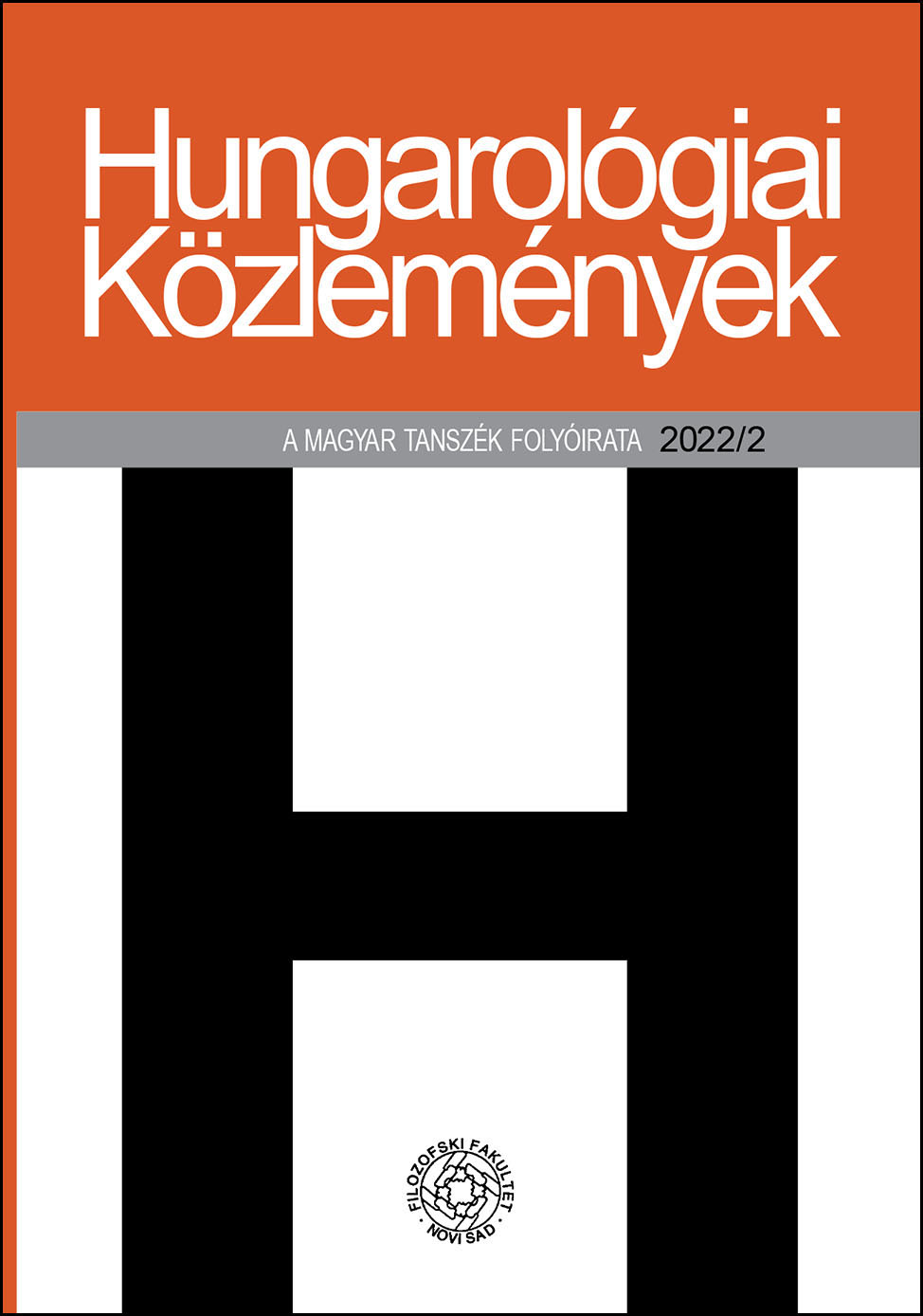
The paper deals with the constructs of otherness and alienation and the depiction of gender in Márai’s novel sequence A Garrenek műve [The Garrens’ Work]. It explores the stereotypes of masculinity and femininity and their changes in the novel in addition to the variations of otherness. One of the constructs of otherness is the metropolitan “Byzantine” man, who is “no longer quite a man, but not quite a woman”. The presentation also pays attention to the mechanisms of otherness and forming enemies, to the manipulations of rhetoric and power, which equally include subversion, disgust, or the social phenomenon referred to as “sexual turmoil” by Márai. Some of Márai’s protagonists seem to be carefully dressed dummies who demonstrate the “diseases” of civilization with their otherness. In the time of “the obsessed bourgeois”, according to Márai’s protagonist, the sick “sexus” of the German people also afflicts their world consciousness. According to one character, for example, the feminine Leader, i.e., Hitler, is a “mix of a Slovak female cook and the Werwolf”: the beast of fascism is demonized in this grotesque joke as an androgynous and animalistic freak of nature. On the other hand, the radical “otherness” of the identity of the “artist” constructed by Márai is presented as an inherently positive otherness.
More...
In Ottó Tolnai’s literary work of experimental nature, all genres are characterized by his testing of the characteristic rules of the genre, traditions and expectations, and the suspension of the constraints of the genre. This entails a sense of awareness of the genre and the activation of the expectations that have just been questioned, as well as a search for the authenticity and a unique form of the narrative. His two volumes of prose Gogol halála [Gogol’s Death] and Virág utca 3 [3 Flower street], which followed the sequel novel Érzelmes tolvajok [Emotional Thieves] (1965) published in Új Symposion [New Symposion] and the novel Rovarház [Insect House] (1969), are chains of short prose held together by motivic connections beyond the act of juxtaposition. The connection between the two books became even more obvious from Ottó Tolnai’s afterword in their 2016 joint edition. Virág utca 3 was already designated as a novel in its first edition, while the author’s afterword in the 2016 edition suggested the possibility of considering Gogol halála also to be a novel. Their classification as novels provokes the genre, and therefore these works without a narrative centre fit into the line of Tolnai’s experiments with the language of prose through their metaphorical connections. In the afterword of the 2016 edition, touching upon the structure of the volume, Tolnai also discussed the rhizome theory of Gilles Deleuze and Félix Guattari. With the same validity, we can activate the conception of minority literature present in the literature of these French theorists. According to Kafka: Toward Minor Literature, “minority literature” is a fight for liberation from a clear boundedness to a territory, a clear meaning, and meanings “bounded” to something: “To make the sequence vibrate, to open the word to unheard-of inner intensities – in short, an asignifying, intensive use of language”. Tolnai’s experiments in literary language and genres fulfill the co- author duo’s requirements related to an intensive use of language, linguistic means which “stretch the limit of a concept or [...] go beyond it”. Gogol halála and Virág utca 3 are on the borderline of the novel genre, without expressing a sense of home, being “nomads” of the genre. The presentation deals with the characteristics of this minority language of novels within the genre.
More...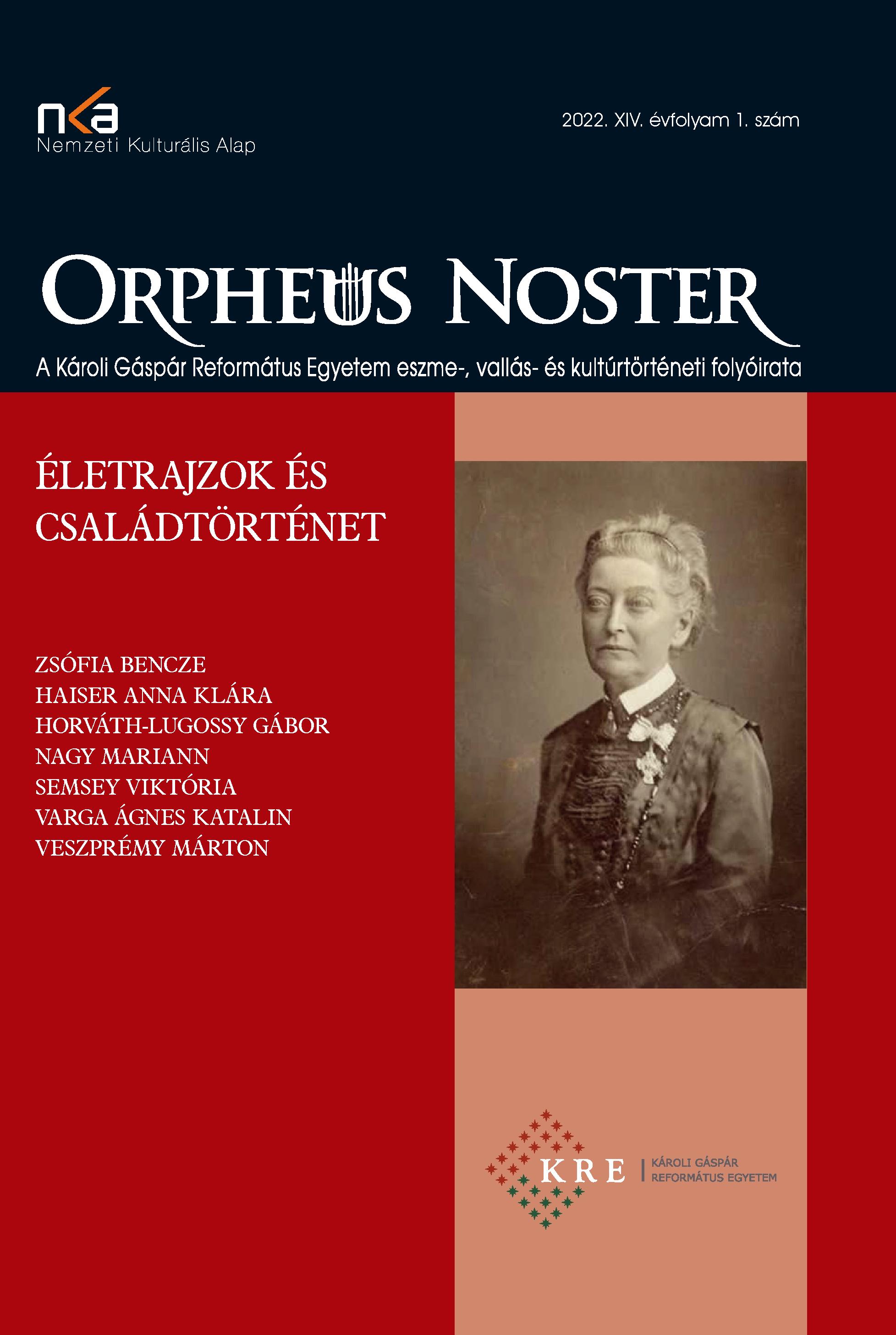
István Milotay was one of the leading journalist and newspaper editors between the two world wars. He was an opinion leader of the era and a member of parliament. One of the creators of the modern national press. He was characterized by patriotism, nationalism, and racial protection. And as a national radical, he was anti-Semitic, which was partly explained by the Hungarian middle class dominated by political, social, and ethnic conflicts. He was a determined and committed thinker of millennial national and political integrity. He was in favor of restoring national self-consciousness, greater protection of national interests, and radical right-wing modernization. Agreeing with the radical German policy of the country with the commitment to a common destiny of the German-Hungarian revision interests, he was a good symbol of its own and the country’s forced career and fall.
More...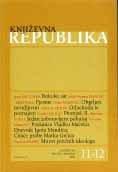
1. Poetry written by Marton Kalasz: “HORDERLIN, FRAGMENT ŠETNJE”, “LA PASTORELLA”, “NOSTALGIJA”; 2. Poetry written by Katalin Mezey: “KAO ZAHRĐALE NOŽEVE”, “NIT MOLITVE”, “SAKRIVAŠ U MOM TIJELU”, “HRAM DUŠE”; 3. Poetry written by Mario Papp: “BUDUĆNOSTI VJERAN”, “SLAVIM DOBA MINULA”, “MUŽEVNO DOBA”, “MUDRACI SA ISTOKA”, “GDJE JE U PROŠLOME MOGUĆE”.
More...